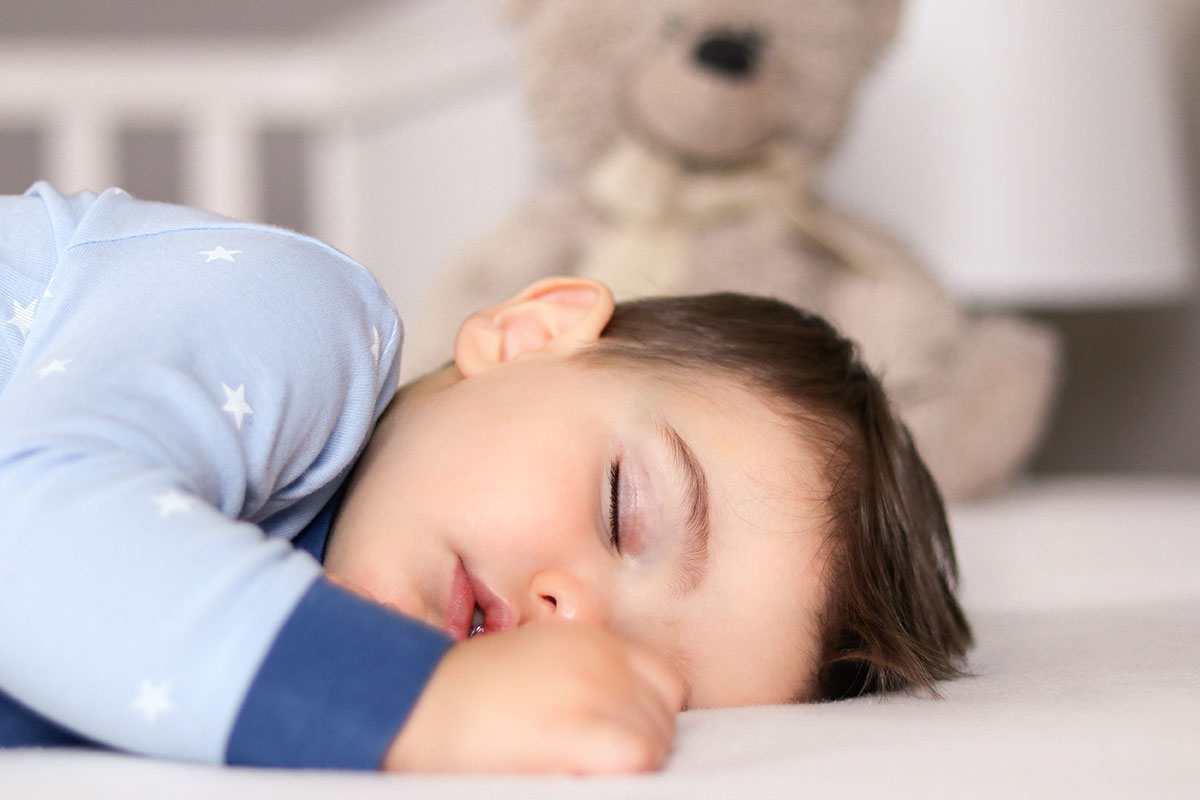
When you think of a sleep apnoea sufferer, you don’t normally picture them wearing Disney pyjamas, surrounded by stuffed toys and nestled in brightly coloured bedding. But that’s the reality for some kids, and you need to be able to spot it.
“OSA is estimated to affect around 5% of children. It occurs across all age groups and peaks in the preschool years,” says Simon Kemp, Clinical Operations Manager at Sleep Studies Australia.
HBF claims data backs this up, with kids under five being the second largest age group to claim for sleep apnoea treatment1.
But what is sleep apnoea?
Simply put, Obstructive Sleep Apnoea (OSA) happens when the sleeper’s throat becomes partly or completely blocked while they’re asleep. This causes them to stop breathing for a few seconds (an apnoea), which makes them wake up multiple times during the night.
For kids, the most common reason for the throat becoming blocked is large tonsils and adenoids.
A parent's guide to tonsils
Everything you need to know about enlarged tonsils, tonsillitis and tonsil removal surgery.
“In otherwise healthy children, adenotonsillar hypertrophy is the most common cause of OSA,” says Kemp.
OSA can be dangerous if left untreated. Severe cases are linked to effects on the heart and lungs as well as growth. That’s alongside the effects poor sleep can have on their cognitive development and behaviour. The good news is it’s pretty easy to spot and treat. Look out for these five things to figure out if your toddler has OSA.
1. Snoring
Snoring is the first big giveaway of sleep apnoea in toddlers, as it’s a sign that something is obstructing the upper airway.
“Most kids shouldn’t snore. The majority of the time it’s because they have large tonsils, unless they’ve got a head cold,” says Kemp. Some kids will grow into their tonsils, but for others the solution is a tonsillectomy.
Whether your child needs their tonsils surgically removed depends on the severity of their sleep apnoea. If your GP thinks surgery may be the answer, they’ll recommend a sleep study to properly assess the situation first. If your kid’s a snorer, instead of thinking ‘they’re taking after their dad already’, look out for sign number two...
2. Apnoeas
The second biggest sign is witnessing apnoeas, AKA when your child stops breathing for a few seconds while they’re asleep.
Listen out for grunts or snorts, which is them getting their breath back. They may also stir or even wake up. Snoring combined with apnoeas is a sure sign to get your child to the GP for a check-up.
“Those two signs combined with some of the other symptoms would suggest ‘hey, you need to get this looked at’,” says Kemp.
3. Frequent awakenings
Outside of the usual awakenings—for example, when they’re hungry—kids should sleep through the night. One reason behind their bad sleep (and yours) could be sleep apnoea. Children with sleep apnoea need to keep waking up to breathe, which makes parents think they can’t maintain their sleep.
This constant battle for breath causes hormones to race through their little bodies, which makes it hard for them to nod off again.
“The mechanism that wakes them up often means that they have a bit of adrenaline going through their system, and you’re not going to fall back to sleep with adrenaline running through your system,” says Kemp.
4. Excessive daytime sleepiness
Is your child less ‘rise and shine’, more ‘rise and whine’? This is a symptom of sleep apnoea to look out for when your child is awake.
Like adults with OSA, kids are sluggish and unrefreshed the morning after a bad night’s sleep. It can take a lot of effort to get them up, dressed and ready for day-care or school.
“Normally they’ll get up and off they go, but that’s not the case when they have sleep apnoea. They’re slow to get going, they appear unmotivated, lethargic and lack energy, which can be interpreted for something else when really it’s just poor-quality sleep," says Kemp.
5. Lack of concentration
If one or more of the symptoms above sound familiar, it’s worth asking your kid’s day-care or pre-kindy teachers about their concentration levels. Kids who suffer from sleep apnoea will be lethargic, which may see them doze off in class and perform poorly in activities.
On the other hand, tired kids may show challenging or hyperactive behaviour, which will also lead to poor performance.
“The teachers may notice they’re not engaged, they’re distracted, they’re not developing as they should,” says Kemp.
“Your peak learning years are in your younger years, so if that’s compromised to start with then that’s going to have a knock-on effect down the track.”
What to do if you think your child has sleep apnoea
If you notice your child has any of these signs or symptoms, particularly snoring, book an appointment with your GP. If it turns out to be OSA, don’t worry, your GP will usually recommend a sleep study to figure out how bad the sleep apnoea is, then look at treatment options. Whatever the outcome, rest assured, a sound night’s sleep is on the horizon for you both.
Related: Does your partner have sleep apnoea?
When a gentle kick or a roll onto the side won't do the trick, there are better solutions than sleeping on the couch.
Read more
Sources:
1 HBF claims data (FY20): 34 claims (aged under 5), 23 claims (aged 5-9), 17 claims (aged 10-14), 24 claims (15-19).